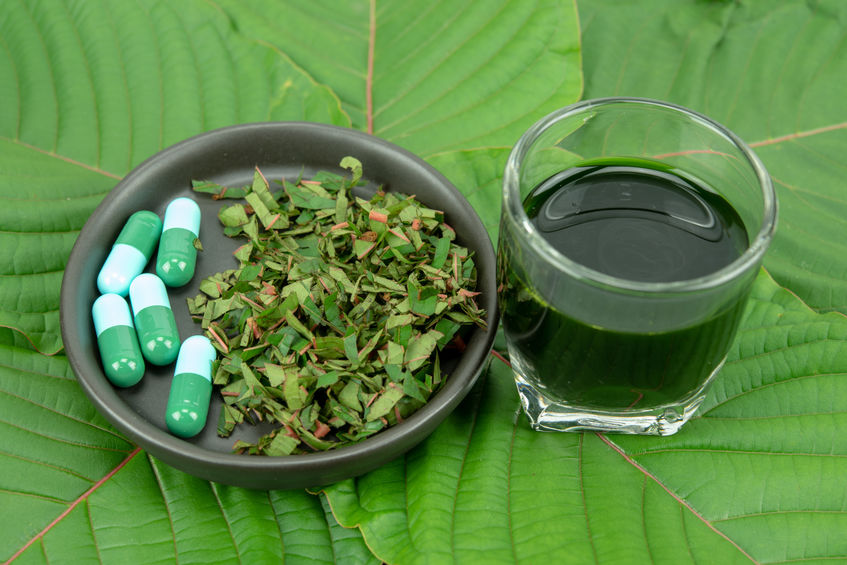Kratom, or “mitragynine speciosa” is a type of tree that grows in Southeast Asia. These trees are found naturally occurring in many places, however are farmed elsewhere. Kratom is a psychoactive herbal medicine that acts either as a stimulant or relaxant, depending on the type of kratom being harvested. Kratom has been used for centuries by locals in Southeast Asia and is growing in popularity across the world.
Kratom grows best in these climates due to the high humidity/high heat combination, often leading to species of kratom being grown in areas of dense rainforest, such as Borneo. Kratom requires acidic soil, with a pH level of between 5.5 and 6.5. While it is important to keep kratom trees well-watered, they can be overwatered, attracting bugs and causing fungus to grow. Kratom often grows best in nature and some of the best kratom can be found on the edges of rivers in rainforests, untouched by man.
Many kratom trees grow up to twenty feet high before they are harvested.

How Is Kratom Processed?
Processing the kratom begins by harvesting the leaves – this simply means cutting or tearing the leaves off the trees, once they reach maturity. This can also be done before the leaves reach maturity, depending on the type of kratom is being produced. For example, white kratom is produced by harvesting leaves before they reach maturity – this is signified by a thin white film on the veins of the leaf – indicating it is early in its maturation. Green kratom is also produced before the leaves reach full maturity. Meanwhile, red kratom is produced by picking the leaves as they are at peak maturity – denoted by the slight red coloration on the leaves and stems. It is because of this late-harvesting protocol that red kratom of all types is considered to be among the most potent kratom available.
One of the most important parts of the kratom harvesting process is the drying. It’s here that the potency of the kratom comes into play.
Sometimes, leaves are dried in the heat of the sun on a rack. Other, more commercial growers who harvest kratom in large quantities will do so in facilities under UV light. There’s plenty of variety when it comes to how the drying process affects the end product – sometimes kratom is subjected to a process of fermentation – though there is little information on this process in particular.
Where Do The Different Strains Come From?
Different strains of kratom are generally derived from how the kratom is harvested. Here’s a small window into how one supplier harvests their kratom and how that harvesting process affects what type of sub-strain is produced. This method is generally for other reputable suppliers of kratom.
White kratom – white kratom, as indicated by the white colour on the veins and stems of the leaf is generally not subjected to any ultraviolet light at all during the drying process. This maintains the richness of the plant at the stage of its life cycle when it was harvested.
Red kratom – by contrast, red kratom is usually kept under intense UV lighting. This generally results in a heavier leaf discoloration and therefore a more potent result of an end-product.
Green kratom – green kratom is, in general, a more middle-of-the-road kratom to consume. It is subjected to a mixture of sunlight and UV lighting, but also spending ample time out of direct light and heat, offering a potent, but not too much so, end product.
Of course, every grower of kratom processes their product slightly differently, so the variety is as wide as the day is long.
What Form Does Kratom Take?
Once sufficiently dried, what remains of the kratom leaves are often crushed into a powdered form. This powder is one of the most popular ways to enjoy kratom. It is often mixed with water, tea, or even juice. The mixture with citrus juices in particular is said to offer an accelerated efficacy rate, meaning that the effects of the kratom will be felt in less time when the powder is absorbed by juices that are high in citric acidity levels.
Other forms of kratom include liquid, this is often absorbed in tea. Otherwise, kratom is most commonly found in capsule form.
In conclusion, the effects of different types of kratom on the body largely depend on where the kratom was produced – i.e: what type of environment, what type of harvesting methods were used upon the harvested leaves, and how the kratom leaves have been dried. Kratom is one of those herbal medicines for which there is so much variation between end-products that it can be difficult to ascertain anything conclusive.
With that said, if you have any questions about kratom and would like to explore the product further, please reach out to us via our website. We can discuss with you what type of kratom would work best for you, at what dose and how you can go about entering the wonderful world of kratom.